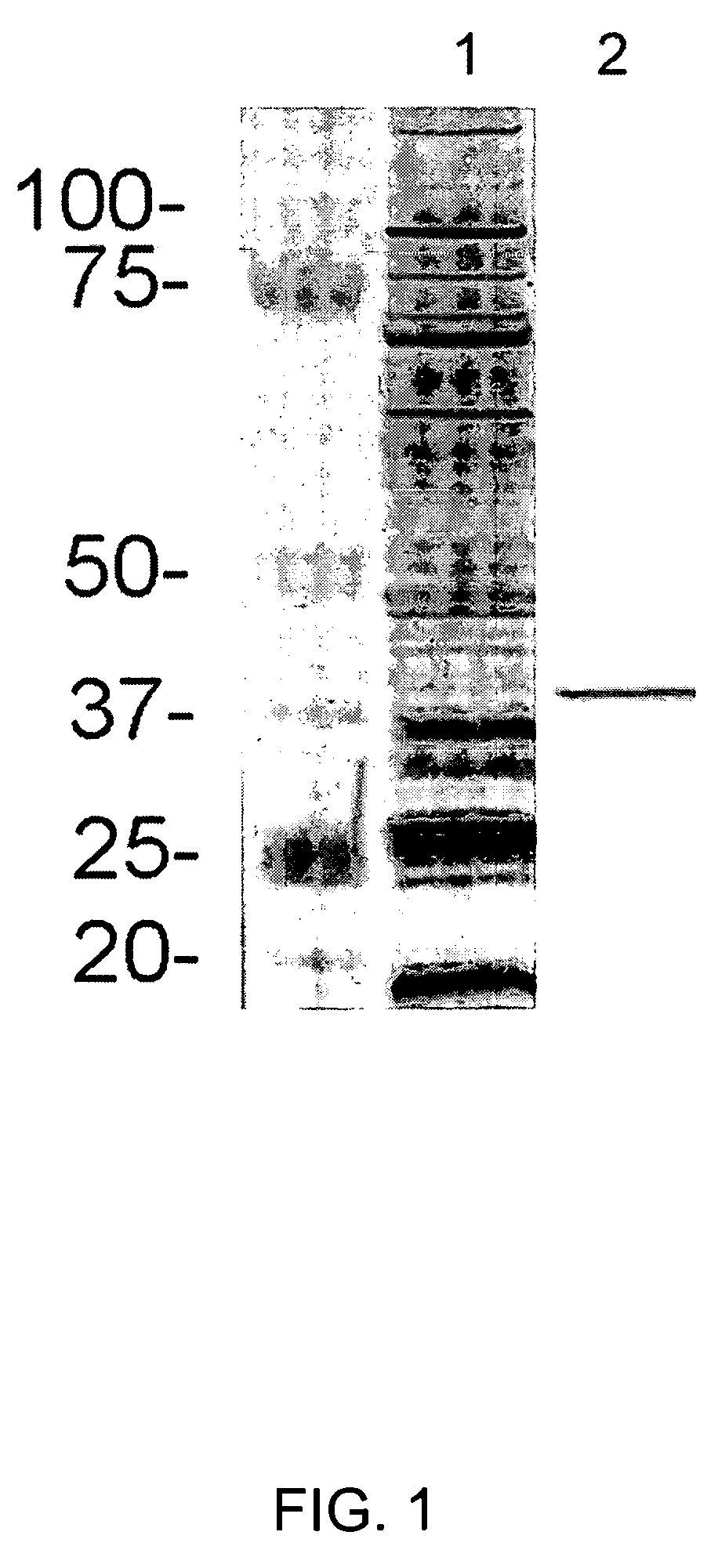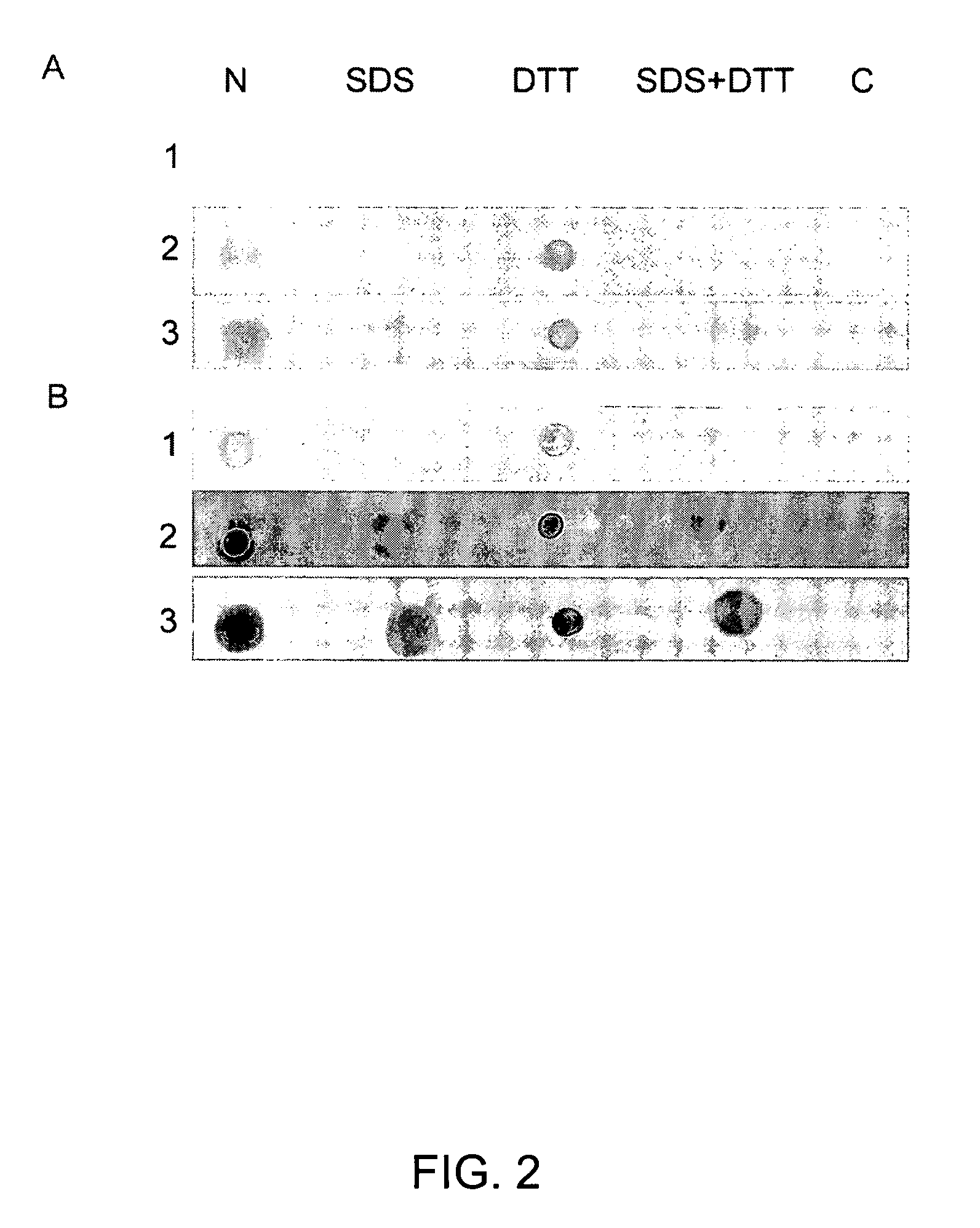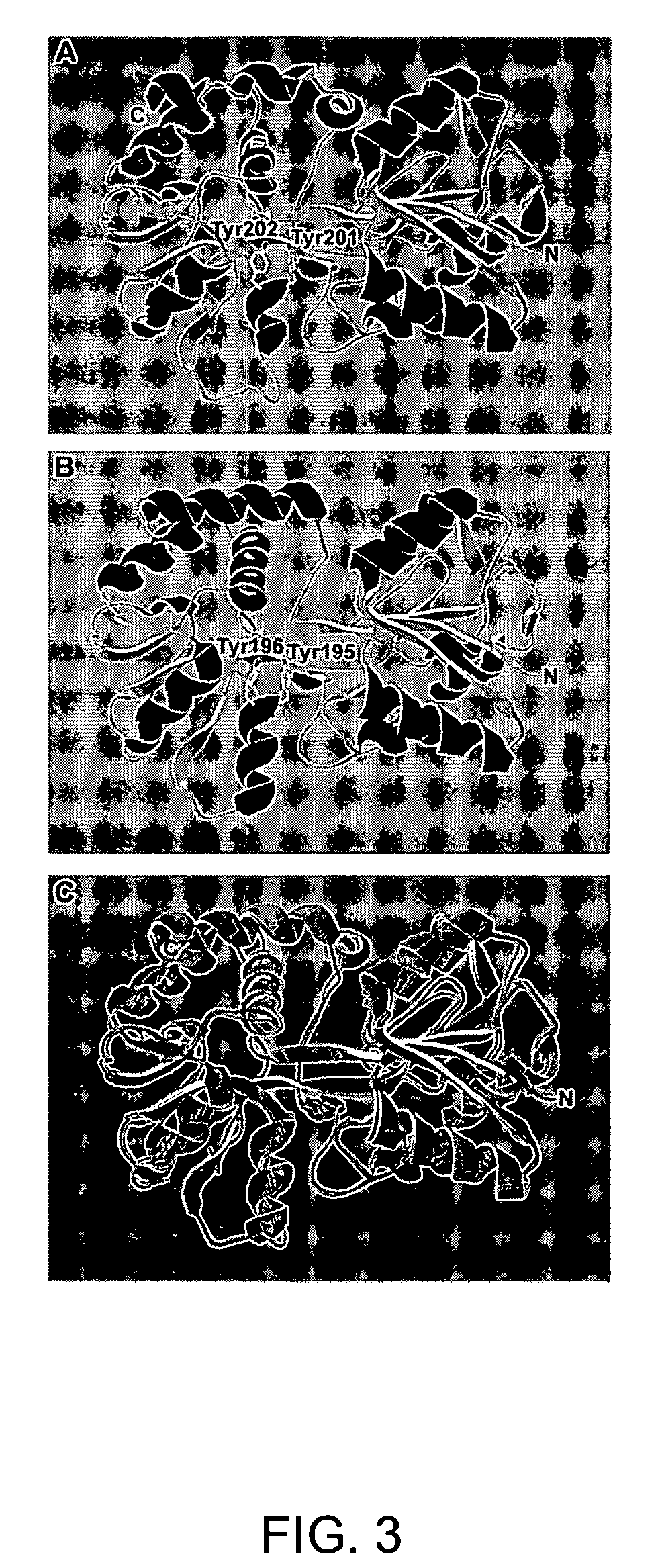Immunoreactive 38-KDA ferric binding protein of ehrlichia canis and uses thereof
a technology of ferric binding protein and ehrlichia canis, which is applied in the field of immunomodulatory 38-kda ferric binding protein of ehrlichia canis and the molecular biology of ehrlichia, can solve the problems of unproven iron binding properties of ehrlichia canis and the public health threat, and achieve the effect of demonstrating the functional binding properties of i>ehrlichia /i>fbps
- Summary
- Abstract
- Description
- Claims
- Application Information
AI Technical Summary
Benefits of technology
Problems solved by technology
Method used
Image
Examples
example 1
Identification, Cloning and Expression of the E. Canis Immunoreactive Fbp
[0335]Discovery of an immunoreactive E. canis Fbp. Expression clones from a HpaII E. canis genomic library were screened as previously described (McBride et al., 2001). A positive clone with a 3-kb insert contained a complete 1,044 bp open reading frame (ORF) encoding a predicted protein with a molecular mass of 38.8 kDa with homology to periplasmic ferric binding proteins (Fbp) characterized in several gram-negative organisms. An N-terminal signal sequence of 27 amino acids on theE. canis Fbp was identified by the SignalP prediction server (Nielsen et al., 1997). The molecular mass of the mature protein is predicted to be 35.8 kDa. This 3-kb clone also contained a partial ORF upstream of fbp with homology to the surface protein p106 of E. chaffeensis (Yu et al., 1999).
[0336]Identification of native E. canis Fbp protein. Rabbit serum raised against the recombinant Fbp protein was used to identify the correspond...
example 2
Fbp Homology and Modeling of the E. Canis Fbp Protein
[0338]Fbp homology and modeling of Ehrlichia Fbp structure. BLAST analysis of the protein sequence of E. canis Fbp determined that it shares homology with a family of known ferric binding proteins. This family includes bacterial Fbps from Neisseria gonorrhoeae and Haemophilus influenzae, both of which share ˜28% homology with E. canis Fbp, and an Fbp from Mannheimia (Pasteurella) haemolytica which shares 40% homology. The amino acid sequence of the E. canis Fbp included two adjacent tyrosines near position 200 of the mature protein, which are key components of the iron binding potential of the Fbp family (Bruns et al., 1997; Shouldice et al., 2003). The amino acid sequence of E. canis Fbp also maintains a basic amino acid at Lysl4 that aligns with the important His9 of these proteins from N. gonorrhoeae and H. influenzae (Bruns et al., 1997). The crystal structure of M. haemolytica predicted an octahedral means of iron coordinatio...
example 3
Genomic Organization of the E. Canis Iron Acquisition Proteins
[0339]The known Fbp family members are a part of a 4-kb iron-regulated operon which includes the functionally related membrane permease and an ATP-binding protein. The members of these iron transporting operons are separated by small intergenic sequences, 56 bp between fbpA and fbpB and 21 bp between fbpB and fbpC in the Neisseria gonorrhoeae system (Adhikari et al., 1996), and no intergenic regions in the Yersinia pestis yfeABCD system (Bearden et al., 1998). Examining the neighboring genes from available genome of the Ehrlichia canis fbp identifies a putative membrane permease downstream from fbp, but separated by 1.304 kb (FIG. 4). A similar study of the E. chaffeensis fbp region places the putative membrane permease 1.81 kb downstream of fbp (FIG. 4). Interestingly, the related rickettsial organism Anaplasma marginale genome positions this putative membrane permease upstream of the fbp gene by 5.5 kb and has two ORFs ...
PUM
| Property | Measurement | Unit |
|---|---|---|
| temperature | aaaaa | aaaaa |
| ionic strength | aaaaa | aaaaa |
| temperature | aaaaa | aaaaa |
Abstract
Description
Claims
Application Information
 Login to View More
Login to View More - R&D
- Intellectual Property
- Life Sciences
- Materials
- Tech Scout
- Unparalleled Data Quality
- Higher Quality Content
- 60% Fewer Hallucinations
Browse by: Latest US Patents, China's latest patents, Technical Efficacy Thesaurus, Application Domain, Technology Topic, Popular Technical Reports.
© 2025 PatSnap. All rights reserved.Legal|Privacy policy|Modern Slavery Act Transparency Statement|Sitemap|About US| Contact US: help@patsnap.com



